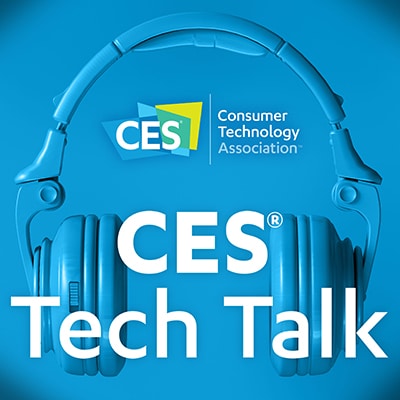
Talks of a potential merger between Southeast Asia’s two biggest tech super-apps, Grab and GoTo, have once again captured the region’s attention.
The two companies—long-time rivals in ride-hailing, food delivery, and digital payments—have held on-and-off talks since early 2024, but this time, momentum appears to be building with the Indonesian government’s sovereign wealth fund, Danantara, stepping in to facilitate talks aimed at creating a regional tech giant.
If the merger goes ahead, Danantara could receive a minority stake in the combined entity, along with special rights over its Indonesian operations.
But behind the headlines lies a bigger question: has Southeast Asia’s super-app dream peaked?
Both Grab and GoTo spent years racing to dominate every corner of consumers’ digital lives, fueled by billions in venture capital and a growth-at-all-costs strategy.

But investor patience has worn thin after years of heavy cash burn and unprofitable operations. Rather than a move to expand, the potential merger looks like a truce between rivals—a way to stop competing, not start growing.
A near-monopoly in Southeast Asia
Both Grab and GoTo have spent the past decade battling for the same customers in overlapping markets.
A merger would allow them to stop competing head-to-head and achieve near-monopoly positions in ride-hailing, controlling almost 90% of Singapore’s market and more than 91% in Indonesia, according to Euromonitor International.
Analysts say the deal would bring immediate scale advantages. The combined group could consolidate driver and merchant networks, cut duplicate marketing and technology costs, rationalise incentives, and extract operating leverage across their businesses.
These efficiencies would extend beyond ride-hailing across their other verticals, potentially putting pressure on rivals like Shopee, Lazada, and digital banking platforms.
And this matters because both companies have been under pressure to demonstrate sustainable profitability, particularly after going public. Grab and GoTo had a combined market value of US$72 billion at their 2021 and 2022 listings.

Since then, shares have tumbled—Grab down more than 50% and GoTo over 80%, largely due to fierce regional competition. Most recently, GoTo shareholders, including SoftBank, even reportedly pushed for the removal of its CEO amid declining share prices.
Both firms have also faced years of losses. Although Grab recently posted its fourth consecutive profitable quarter in Q3 2025, that profit was driven not by rapid growth or new customers, but at tighter cost management and more disciplined incentive spending.
GoTo also endured multi-year losses before turning profitable on an adjusted basis in 2024, following job cuts and stringent cost-cutting measures, including the downsizing and majority sale of its loss-making e-commerce unit, Tokopedia, to ByteDance’s TikTok to the tune of approximately US$1.5 billion.
But whether they can continue this momentum will depend on how these two companies navigate shifting growth models and manage intense market competition, especially as consumers in the region are spending more cautiously amid high inflation and rising interest rates—a merger could offer a way to stabilise operations and reduce competitive pressures.
The path to a merger isn’t so simple
But the path ahead isn’t easy.
While the merger could deliver significant operational efficiencies and scale advantages for both firms, it raises concerns for consumers and the wider market.
An academic from Universitas Airlangga in Indonesia cautioned that the combined entity could exploit its dominance to set prices at consumers’ expense.
“The Grab–GoTo merger opens the door to predatory pricing,” he said. “They may start by slashing prices, capitalising on improved efficiency. This would eliminate competitors, and once they dominate the market, they could freely set prices at consumers’ expense.”
Moreover, the scale of the merged entity would be unprecedented across multiple industries, far beyond Grab’s previous focus on Singapore and local consolidation.

Evidence from past deals highlights the risks. For instance, the Competition and Consumer Commission of Singapore (CCCS), Singapore’s competition watchdog, found that Grab raised prices by 10–15%, altered its rewards scheme, and reduced incentives for drivers following its merger with Uber in 2018.
The watchdog determined the deal anti-competitive, and issued a combined fine of S$13 million to both parties. Grab was also required to remove exclusivity obligations on its drivers and taxi fleets.
Similarly, Grab’s proposed acquisitions of taxi company Trans-Cab and delivery platform foodpanda were either blocked or abandoned following regulatory scrutiny.
The Trans-Cab deal, for instance, was deemed likely to create barriers for rival platforms, potentially raising costs for both drivers and passengers. As a result, Grab ultimately pursued its own taxi license, eventually entering the inustry as GrabCab. Meanwhile, the foodpanda acquisition was dropped after a CCCS probe in February 2024, which raised similar competition concerns.
The Grab-GoTo merger could fall through if competition watchdogs raise concerns similar to those seen in these previous consolidation deals. To mitigate regulatory pushback, the ride-hailing companies are reportedly in discussions to offer Indonesia’s sovereign wealth fund, Danantara, a “golden share” in the merged entity.
A golden share is a special type of equity that grants its holder unique rights, often including the ability to veto key decisions or protect national interests.
In this case, it would apply only to the Indonesian operations, giving Danantara the power to safeguard government priorities while allowing the merged entity to operate across the wider region.
Creating a US$29 billion tech giant
It remains to be seen if the merger will go through, given these concerns.
But if approved, it would create a Southeast Asian tech giant worth US$29 billion, combining mobility, delivery, e-commerce, and fintech operations under one umbrella. The merger would also represent the most complex corporate integration in Southeast Asia’s tech history.
This includes aligning corporate cultures and integrating overlapping units like GrabPay/GoPay and Tokopedia/GrabMart, as well as managing hyper-local driver, merchant, and user ecosystems across different countries.
In addition, consumer blowback to the potential creation of an effective monopoly over such everyday services could be monumental.
Technical hurdles around separate cloud architectures, data localisation laws, AI systems, and regulatory compliance will also determine whether the merger delivers true efficiencies or collapses into costly integration chaos.
- Read other articles we’ve written on Singaporean businesses here.
Also Read: J&T Express moves 80 million parcels a day—here’s how it became a global courier powerhouse
Featured Image Credit: Anggun Risky Darmawan/ Shutterstock.com
Last modified: November 13, 2025







